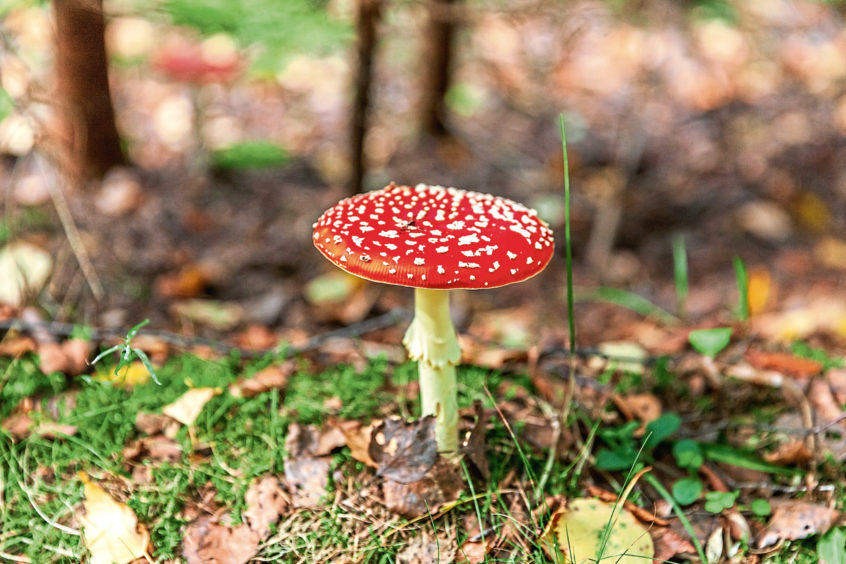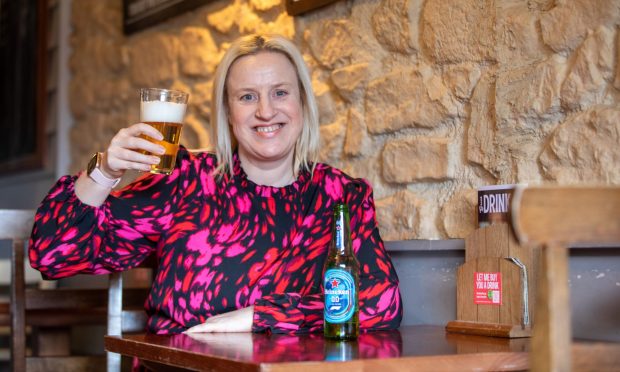Gayle learns how to grow blue oyster mushrooms on logs at a workshop run by Fit the Fungus founder Chris Stuart.
From the delicious and the ‘magical’ to the deadly and strange, there’s an amazing kingdom of fungi out there, just waiting to be discovered.
There’s nothing new about the art of foraging – collecting mushrooms for the pot – although you do need to be able to identify species confidently if you want to avoid a trip to A&E…
Chris Stuart, founder of gourmet mushroom business Fit the Fungus, fully appreciates just how marvellous mushrooms are. “They talk to each other!” he beams, when I show up for one of his workshops.
And no – Chris isn’t talking nonsense. Mushrooms really DO talk to each other.
Wood wide web
They function a bit like the internet, or the ‘wood wide web’ of the forest, throwing out messages and helping plants and trees communicate via fungal mycelium – the fine network of threads, from which mushrooms grow.
Talking mushrooms aside, Chris’s workshop is about how to cultivate your very own clutch of Blue Oyster Mushrooms – on logs in your garden. Once they’ve grown – and it takes a wee while – you can harvest and eat them! The joys!
A former scallop diver and ex-oil and gas worker, Chris launched Fit The Fungus from his farm near Rora in Aberdeenshire in 2017 and has been bombarded with orders for his gourmet products ever since.
Health benefits
As well as selling mushrooms, online and to high-end restaurants, he makes tinctures using the likes of Chaga, which he describes as “gold dust”, and he’s a firm believer in the health benefits of fungi.
In season, he runs foraging workshops, but as winter bites, he’s putting on a series of ‘growing mushrooms on logs’ sessions.
It’s Friday night when I show up at Longhaven Hall near Peterhead, but there’s a good turnout.
Chris kicks off by showing us a selection of weird-looking fungi found in local forests.
There’s Jelly Ear, Turkeytail, and Hoof Fungus, plus some chunks of Chaga, which he says is often mistaken for tree burls – deformities formed due to environmental stress.
“Paul Stamet, the famous US mycologist, makes ‘mushroom hats’ out of Amadou, or Horse Hoof Fungus!” says Chris, and we all jump onto our phones for a Google. Impressive!
Log ventures
We then watch as Chris demonstrates how to get started with our mushroom log ventures.
The first step is to make up a formula to encourage the log to accept mycelium and get rid of any bad bacteria. It’s called ‘inoculation’.
It gets a tad complex – that’s why it’s best to attend one of Chris’s workshops.
Essentially, you soak some barley in a pressure cooker to pasteurise it, then add a bit of mycelium – “the root system of mushrooms; the bits you don’t see,” says Chris, adding: “It’s basically mushroom seed.”
After leaving the barley somewhere dark for a fortnight, you ‘inoculate’ wooden dowels with mycelium, pop these into pre-drilled holes in your log (birch or any hardwood is best) , leave it somewhere damp, and let nature do its thing.
“Initially the log would kill off any mycelium introduced to it,” explains Chris, “so you need to leave it two weeks and hope nothing else – other fungi – invades it.”
Luckily, Chris has cut and pre-drilled some logs, so all we need to do is get plugging with dowels he’s already soaked in mycelium, and then brush over them with molten wax.
“The wax protects the log from loss of moisture and critters,” explains Chris. “Then, the competition begins! You want to hope Blue Oyster wins over Turkeytail!”
Dark and damp
It’s then a case of putting you log somewhere dark and damp and waiting… for nine to 16 months. That’s how long it takes before “fruiting” begins.
The exciting time, for me, will be in autumn 2023, or, scarily, spring 2024!
That’s when my Blue Oysters will sprout, all being well, and I’ll be able to feast on fungi galore!
“Pick them before they curl up, like a skirt lifting,” says Chris, stifling a laugh.
“They’re best harvested ASAP. You should get two years of growth. After that, the sugars and goodness will go, but you can use the log for firewood.”
Striking blue
The Blue Oyster starts out being a striking blue and turns grey as it matures. And, excitingly, they grow in clusters, rapidly, sometimes doubling in size in a day!
As someone who enjoys mushrooms in curries and stir-fries, I’m keen to see how mushroom expert Chris prefers his.
“Always, always on toast!” he grins. “There’s nothing better! Add butter and garlic and you’ll be in heaven.”
Chaga
Chris is hugely passionate about his new range of tinctures, and especially excited about the Chaga recipe.
“I make no medical claims but I’ve heard a lot of positives about Chaga, and how it can help ailments from fatigue to arthritis and high blood pressure,” he says, popping a few drops under my tongue.
I won’t lie – it does taste rather bitter, but if it’s going to work wonders then I’ll take it!
“I’ve got a friend who drinks Chaga tea and he’s got no wrinkles,” beams Chris. On hearing this, I try not to down the entire bottle!
Fit the Fungus
Before I leave, I have to ask – why did Chris name his company Fit the Fungus?
He laughs: “People used to ask, ‘fit’s that?’ in broad Doric when they were asking me to identify mushrooms.
“It turned into ‘fit’s that fungus’, and then ‘fit the fungus’.
“Folk who’re not from Aberdeenshire often think the word ‘fit’ has something to do with health. I’m happy if they think that!”
Mushrooms galore
As well as Blue Oyster, Chris grows Lion’s Main, which is shaped like a pom-pom and has white tassels.
He hopes, one day, to create a visitor centre, but it’s some way off.
“People would come for a tour and the take away a bag of produce,” he says. “It would be on the North East 250 route.”
- Chris sells powdered mushrooms, plus home-grow kits and tinctures. Check out the Facebook page of Fit the Fungus.



















Conversation